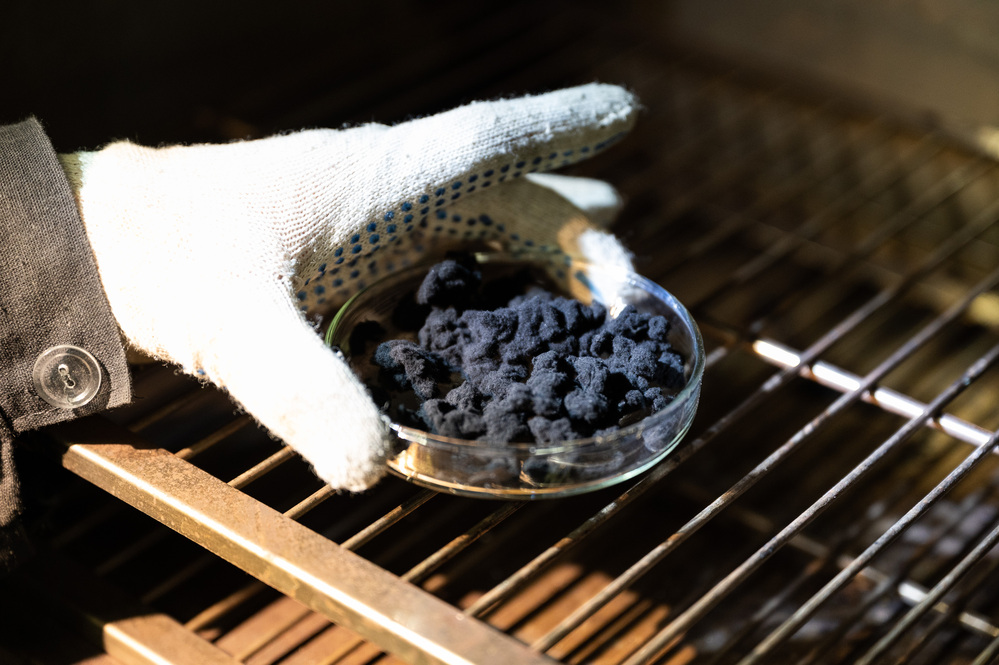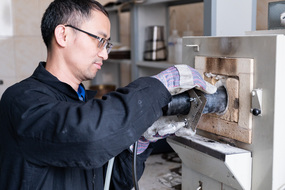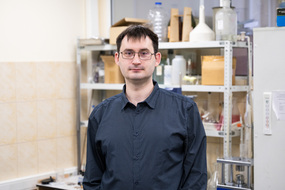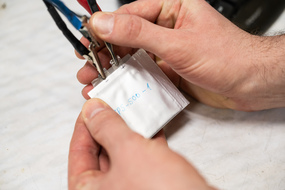The MISIS University scientists together with their colleagues from the Mendeleev University of Chemical Technology of Russia and the Vietnam National University of Forestry have proposed a modification to the existing method of processing textile production waste — cotton linter — into porous activated carbon. Increasing the material heating rate from 5 to 350°C/min enables to concurrently increase the available surface area of the carbon material and accelerate its production by
In these days, there are many types of feedstock that may be used to produce porous activated carbons. At the same time, materials with high cellulose content provide for high efficiency of carbonization — obtaining a greater share of useful carbon material in relation to the weight of the initial organic substance. In that respect, the cotton linter appears promising, as its cellulose content ranges from 80 to 97%. The source of this raw material is textile waste, which is normally incinerated.
Researchers from the NUST MISIS, the Mendeleev University of Chemical Technology of Russia and the Vietnam National University of Forestry have proposed a modification to the method of processing cotton linter into activated carbon, which allows increasing the specific available surface area of carbon material and accelerating its production by
“The core difference of our method is the high heating and cooling rate of the reaction chamber. With conventional modes, the furnace heating rate from room temperatures to carbonization and activation temperatures is usually 5 to 20°C/min. As for the method proposed, the heating rate can reach 350 to 600°C/min for carbonization and up to 750°C/min for activation. In this regard, the nature of side processes during carbonization changes: we assume that the ratio of decomposition and evaporation rates of some more volatile organic components alters, so that it is possible to obtain a carbon base with a greater activation potential than conventional heating. Owing to the above, when using such modes after activation, it was rendered possible to obtain a higher specific surface area due to the emergence of a larger number of pores with the maximum size distribution shifted to the radii of the nanometer unity order,” Ilya Krechetov, an article co-author, Ph.D. (Phys.-Math.), Associate Professor at the NUST MISIS Department of Physical Chemistry, explained.
The high heating and cooling rates are achieved by placing the reactor with the feedstock in a preheated furnace and removing it from the furnace for cooling, rather than cooling down with it. It also reduces the time required to produce the finished material by a factor of two to eight.
“We are primarily exploring the use of carbon materials to create electrodes for electrochemical supercapacitors. Compared to batteries, supercapacitors offer faster charging and discharging, high lifetime (more than 100 thousand charge/discharge cycles) and high power density. They are increasingly used in intermittent energy applications, such as solar, wind and tidal power. However, the disadvantage of supercapacitors, as opposed to batteries, is a much lower specific energy. The use of activated carbon with high porosity for supercapacitors increases the specific energy and widens the choices of their application,” Ilya Krechetov said.
This study is among the steps to determine the influence of various modes of carbon material production on the features of electrodes of electric energy storage devices based on electrochemical supercapacitors. Moving forward, scientists will continue looking for new promising types of feedstock and methods of carbonization and activation to produce such materials.






